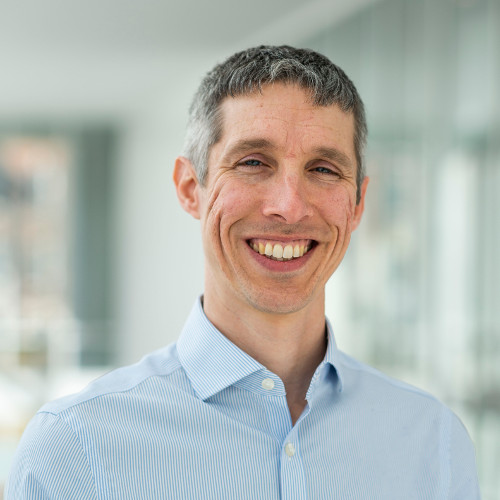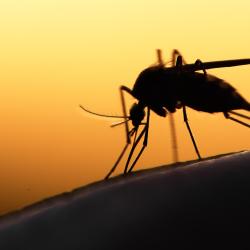UMD Biologist Contributes to 2022 Nobel Prize in Medicine Research
Philip Johnson played a key role in Svante Pääbo’s research on the Neanderthal genome.
On October 3, 2022, Swedish scientist Svante Pääbo won the 2022 Nobel Prize in medicine for his research on human evolution. Pääbo’s work with ancient DNA led to new techniques that allowed close examination of the genomic relationship between extinct hominins (Neanderthals and Denisovans) and modern humans, bringing researchers closer than ever to understanding what differentiates modern humans from their extinct predecessors.

For Philip Johnson, an assistant professor of biology at the University of Maryland, the challenges of Pääbo’s research hit close to home. From 2006 to 2014, Johnson collaborated with Pääbo on studies aimed at unlocking the mysteries of human evolution.
“What makes a human a human? That’s the core question that is at the heart of Svante’s work,” Johnson explained. “The relationship between our evolutionary history and our current selves may not be obvious at first, but it’s definitely an important part of understanding who we are."
Johnson’s work with Pääbo began when Johnson was a biophysics Ph.D. candidate at the University of California, Berkeley, at a time when ancient DNA research was still in its infancy.
“At the time, ancient DNA research was a very small field and it was really driven by Svante and his work. He really gave the field a big push forward,” Johnson recalled. “In the early days, there was significant skepticism about its viability. My task was to help address those concerns.”
According to Johnson, a key problem was being able to demonstrate the authenticity of ancient DNA samples.
“If you were interested in human evolution, you’d be digging up bones of beings that are very closely related to modern humans,” Johnson explained. “One major worry about this type of research was how you would know if the small bits of DNA that you’re finding are really from the endogenous sample rather than contaminants from the modern humans who’ve come into contact with the sample—the archaeologists, the people at the museum who handled the bones or people in the laboratory. You touch something, a bit of your skin flakes off and you’re shedding DNA. That amount of DNA is comparable to the amount of degrading DNA remaining in the bone after thousands of years.”
To prove that the ancient DNA samples and analysis results were not compromised, Pääbo collaborated with the research group led by Johnson’s Ph.D. advisor, Montgomery Slatkin. The group’s expertise on theoretical population genetics—the study of genetic diversity and how that diversity changes over evolutionary time scales—was invaluable to Pääbo's search for ways to validate his findings.
Together with a student in Pääbo’s research group, Johnson helped build a crucial model describing the pattern of damage from DNA degradation and how it occurred with aging DNA. Johnson’s background in biocomputation and statistical modeling also helped him contribute to the development of additional techniques allowing researchers to infer levels of contamination from studying the frequencies of different genetic variants in the data.
“For me, the most fascinating part of all Svante’s research was confirming that there was interbreeding between fully modern humans and ancient hominids like Denisovans and Neanderthals,” Johnson said. “Mixture with Neanderthals had been hypothesized for a long time by anthropologists, but we couldn’t verify that until we had all the genetic data. And we actually didn’t know Denisovans existed until genetic evidence from Svante’s work. So, we weren’t just seeing a little bit of contamination that looked like interbreeding, but actual proof that there was interbreeding.”
Although Johnson’s work on ancient DNA was separate from his dissertation research, Pääbo's work challenged him and helped shape the research in evolution he has conducted since.
Out of the six key publications the Noble Prize Committee cited in justification for Pääbo’s prize, three were co-authored by Johnson.
“My funding was coming from grants and fellowships unrelated to ancient DNA and human evolution, so this was my personal interest and passion to pursue—a really fun side project for me that I wasn’t paid for,” Johnson joked.
Full of warm praises for Pääbo’s achievement, Johnson also noted that it was an unexpected victory for all scientists studying evolution because Pääbo won the prize in medicine. Johnson hopes that the Nobel Prize will encourage more research into ancient DNA and its connections and potential applications to modern humans.
“I wouldn’t have expected the work I did years ago to end up contributing to Nobel Prize-winning research,” Johnson said. “But when I heard about the Nobel Prize announcement that morning and heard that the winning research was on evolution, I immediately guessed it went to Svante. It’s truly a win and an inspiration for any researcher studying evolution.”
###







